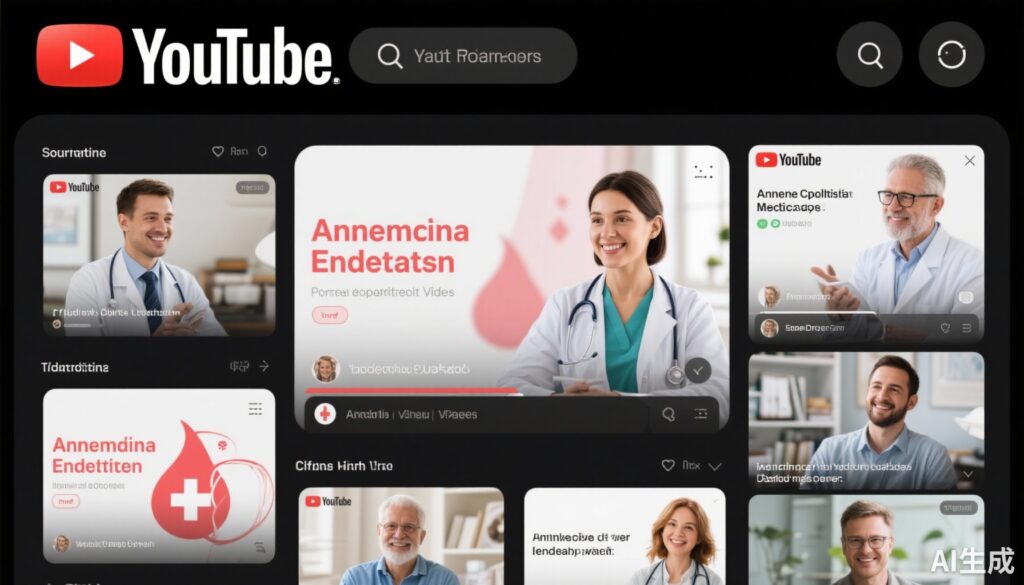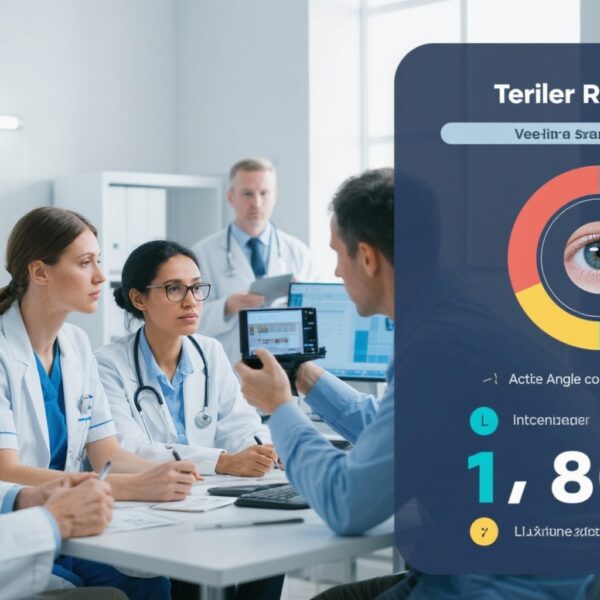Highlight
- Anemia-related YouTube videos show moderate but variable quality and reliability.
- Videos produced by healthcare professionals, especially physicians and medical institutions, demonstrate higher quality and trustworthiness.
- Popularity metrics like likes correlate weakly with video quality, suggesting viewers do not consistently identify reliable content.
- There is an urgent need for clinicians and health organizations to actively produce and promote accurate, engaging anemia-related educational content online.
Study Background and Disease Burden
Anemia is a global public health concern, affecting approximately a quarter of the worldwide population, with particularly high prevalence in low- and middle-income countries. It is characterized by reduced hemoglobin concentration, leading to diminished oxygen-carrying capacity of the blood, with symptoms ranging from fatigue and weakness to more severe complications. Reliable patient education is essential for early recognition, adherence to treatment, and prevention of complications. In the digital era, YouTube has become a popular platform for health information; however, the unregulated nature of content raises concerns about misinformation potentially influencing patient decisions. This study addresses the urgent need to evaluate the quality and reliability of anemia-related information disseminated via YouTube, helping guide both providers and patients toward trustworthy sources.
Study Design
This cross-sectional content analysis involved a systematic search of the YouTube platform in March 2024. Investigators used the keyword “anemia” under incognito mode on a desktop device in Turkey to emulate an unbiased user experience. To reflect typical user behavior, the “relevance” filter was applied, which prioritizes algorithmically ranked videos. The inclusion criteria were English-language videos directly relevant to anemia. Exclusions comprised duplicates, non-English language content, music-only videos, and promotional material.
The final sample consisted of 50 videos. Each video was independently evaluated using several validated assessment tools: DISCERN (an instrument to judge reliability and quality of consumer health information), the Global Quality Score (GQS, assessing overall video quality), and JAMA benchmark criteria (an objective authority and transparency rating system). Popularity was quantified using the Video Power Index (VPI), calculated as: VPI = (like ratio [%] × view rate [views per day]) / 100.
Key Findings
The analysis revealed the following uploader distribution: 2% patients, 10% non-physician healthcare professionals, 14% media organizations, 24% independent physicians, and a majority 50% from medical institutions.
Mean scores across all videos were:
– VPI: 246.76 ± 356.29
– GQS: 3.53 ± 0.81 (scale max 5)
– JAMA benchmark: 2.30 ± 0.97 (scale max 4)
– DISCERN: 48.24 ± 11.94 (scale max 80)
Statistically significant correlations included:
– Number of likes and like ratio positively correlated with GQS scores (p = 0.027 and p = 0.012, respectively), implying some association between viewer endorsement and perceived quality.
– VPI showed a weak but significant positive correlation with GQS (p = 0.047, r = 0.28), indicating that more engaging videos tended to be of slightly higher quality.
– Video duration correlated moderately with DISCERN (r = 0.394, p = 0.005) and weakly with JAMA scores (r = 0.338, p = 0.016), suggesting longer videos contained more comprehensive and reliable information.
Importantly, videos created by healthcare professionals, particularly physicians and medical institutions, scored significantly higher in quality and reliability metrics compared to those uploaded by patients or media outlets.
Expert Commentary
This study corroborates prior concerns regarding online health information quality. While YouTube offers broad accessibility and educational potential, the variability in accuracy presents risks for patient misunderstanding and potential harm. The moderate correlation between popularity metrics and quality suggests that viewers may not consistently discern and prefer high-quality content.
Healthcare professionals and organizations must recognize their vital role in bridging this gap by producing evidence-based, understandable, and engaging materials. Moreover, collaborations with platforms like YouTube could enable badges or verified health expert markers to help users identify trustworthy videos.
Limitations of the study include the restriction to English-language content and a relatively small sample size, which may limit broader applicability. Also, evolving platform algorithms could affect video ranking and visibility.
Conclusion
Anemia-related videos on YouTube are a mixed source of information, exhibiting generally moderate but variable quality and reliability. Videos originating from healthcare professionals offer superior content yet represent only a fraction of total videos viewed. There is a critical need for continued efforts by clinicians and medical institutions to create accurate and engaging digital health education. Additionally, empowering users through improved guidance and digital literacy education to seek evidence-based information is paramount to mitigate the risk of misinformation-related harm.
References
Tekin BG, Tekin SB, Karabulut Ç. Anemia-related YouTube videos: A source of knowledge or misinformation? Digit Health. 2025 Sep 19;11:20552076251380650. doi: 10.1177/20552076251380650
Additional references for context:
– Kassebaum NJ, et al. The Global Burden of Anemia. Hematol Oncol Clin North Am. 2016;30(2):247-308.
– Charnock D, Shepperd S, Needham G, Gann R. DISCERN: an instrument for judging the quality of written consumer health information on treatment choices. J Epidemiol Community Health. 1999;53(2):105-111.
– Silberg WM, et al. Assessing, controlling, and assuring the quality of medical information on the Internet: Caveant lector et viewor–let the reader and viewer beware. JAMA. 1997;277(15):1244-5.



